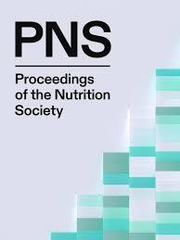No CrossRef data available.
Article contents
A qualitative study exploring the experiences of night shift workers following three different dietary weight loss interventions: mapping of perceived intervention enablers to behaviour change frameworks
Published online by Cambridge University Press: 21 May 2025
Abstract
A subset of Australia’s workforce are shift workers undertaking critical work for our community, who are at greater risk for obesity and related conditions, such as type 2 diabetes and cardiovascular disease(1,2,3). The lifestyle and circadian disruption experienced by night shift workers is currently not addressed in existing dietary guidance for obesity management. The Shifting Weight using Intermittent Fasting in night shift workers study (SWIFt) is a world-first, randomised controlled trial that compares three, 24-week weight-loss interventions for night shift workers: continuous energy restriction (CER) and two twice-per-week intermittent fasting (IF) interventions (fasting during a night shift or during the day). This qualitative study aimed to explore the experiences of participants while following the dietary interventions to understand how intervention features and associated behaviour change mechanisms influence engagement. Semi-structured interviews at baseline and 24-weeks were conducted and audio diaries were collected every two weeks from participants using a maximum variation sampling approach, and analysed using the five steps of framework analysis(4). Each coded text for intervention enablers was mapped to the following behaviour change frameworks: the COM-B model, the Theoretical Domains Framework (TDF), and the Behaviour Change Taxonomy (BCT). Of the 250 participants randomised to the SWIFt study, 47 interviews from n = 33 participants were conducted and n = 18 participants completed audio diaries. Three major themes were identified related to intervention factors influencing engagement: 1) Simplicity and ease are important for night shift workers; 2) Support and accountability are needed to change behaviour and to tackle fluctuating motivation; and 3) An individualised approach is sometimes needed. Ten enabler sub-themes were identified: ease and acceptability of provided foods, structured and straightforward approach, flexible approach, easier with time, simplicity and small changes, dietetic support, accountability, self-monitoring, increased nutrition knowledge, and focus on regular eating. The enabler sub-themes were predominantly related to the ‘motivation’ and ‘capability’ domains of the COM-B model and one sub-theme related to the ‘opportunity’ domain. Mapping to the ‘capability’ COM-B domain was more frequent for the CER intervention compared to the IF interventions. For the Theoretical Domains Framework (TDF), the following domains were the most frequently reported: ‘behavioural regulation’, ‘knowledge’, ‘goals’ and ‘environmental context and resources’. For the Behaviour Change Taxonomy (BCT), the following domains were the most frequently reported: ‘instruction on how to perform a behaviour’, ‘goal setting (behaviour)’, ‘self-monitoring of outcome(s) of behaviour’, and ‘adding objects to the environment’. This study provides important findings detailing the behaviour change mechanisms perceived to positively influence night shift worker engagement during the weight-loss interventions of the SWIFt study, which will help inform the translation of interventions into non-research settings.
Information
- Type
- Abstract
- Information
- Copyright
- © The Author(s), 2025. Published by Cambridge University Press on behalf of The Nutrition Society


